Disclaimer: Selfishgenie Publishing has not received any payment or incentives from Best Page Forward or any of its affiliates for any of the content in this blog.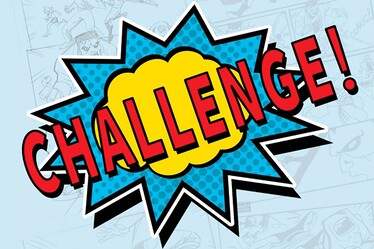 This week’s blog is something of a revisit to earlier blog posts. The reason we’re revisiting it is because it has been so influential in increasing our sales over recent months that we are certain that it can do the same for you. The 5 Day Author Ad Challenge is a free programme of videos and Facebook interactions that can help authors to increase their sales. Let’s deal with the elephant in the room first. You don’t need to spend money to benefit from this challenge.  To get the best out of the challenge it is necessary to spend some money on advertising, but if you don’t have any money to spare, then the challenge does include some ideas for things you can do for free, to make sure your books show up in Amazon’s search results. Saving up some money so you can take part in future challenges could, in our opinion, be the best investment you ever make in yourself and your writing. But the challenge isn’t just about Amazon searches. If you use other platforms, such a Draft2Digital, you can improve the chances of your book being found if anyone enters the right keywords into any search engine. People who don’t have a Kindle often search Amazon for ideas for new books, then go elsewhere to buy them. So, making it easier for people to find your books on Amazon can help regardless of where you publish them. 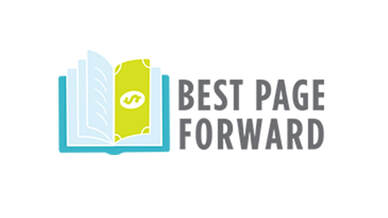 So, the first thing you have to do is sign up for the challenge, and I’ll provide a link for that at the end of the blog (don’t skip ahead! Oh, you already have). They are run every three months or so. They are provided by a guy called Bryan Cohen who runs a business called Best Page Forward, which provides training for authors on a range of book marketing skills. The challenge is a “loss leader”, designed to entice you into buying one or more of their training packages or other services. They also publish books related to book marketing and, if you can spare a few pounds (or Dollars, Yen, Euros, Bitcoin or whatever) we would suggest you buy them if you don’t want to do the challenge – or even if you do. We’ve posted links to our reviews of the books at the end of the blog too. The principle behind the challenge is that using Amazon Ads to sell books WILL always result in increased sales of your book, but by using the techniques and guidelines described during the challenge it will also make your ads more profitable. Profit is defined as royalties minus advertising costs, NOT sales income minus advertising costs. 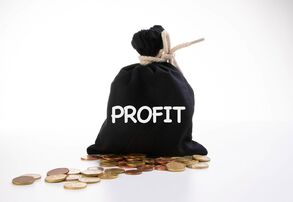 Here at Selfishgenie we are running a business and we aim to make a profit, so if we are able to make this pay then so can you. And we are making it pay. Now, to start with we aren’t talking about making telephone number sized incomes. If you spend £5 (or $, €, ¥ or whatever) it may return you £10. But if you then start to scale that up, £50 could make you £100, £500 could make you £1,000 and so on. So, you are able to start small to find out if it works for you. It will, so you can then start to invest some of your profits into more advertising and so scale it up over time. Bryan boasts of authors he has coached who are now on 6 digit earnings because of this challenge. We can’t verify that, but we can tell you that it has worked for us, and we are earning more profits from our ads than we ever have before, even if it isn’t a 6 digit profit. We have to be careful that we don’t infringe Bryan’s copyright in this blog, so we have to limit what we say to what is open access stuff that you can find on a number of websites. Because of that the best we can do is provide you with a taster. 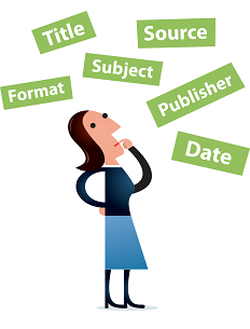 Bryan starts off by talking about the metadata for your book. This is the stuff that you enter on the very first tab of KDP when you self-publish your book. It includes the title, author name and more. Getting the metadata right is crucial to your book being found by search tools, whether it is using Amazon, Google or any other search engine. Getting the metadata right is the stuff that the challenge covers that is entirely free for you to implement. If you get nothing else from the challenge, you will have given yourself a better chance of your books being found. Next Bryan goes through using the different types of ad that are available on Amazon. Amazon Ads provide their own tutorial videos for that, but it is important to recognise that the aims of Amazon and the aims of the challenge are different. Amazon teaches you to use Amazon so that you can spend money on advertising and make THEM a profit. The aim of the challenge is to teach you to use Amazon Ads more efficiently so that YOU can make a profit. The Amazon tutorials teach you to do things in a way that is best for Amazon, not for you. However, the tutorials are good for helping you to find your way around the ads system and we would recommend watching them.  There are basically 4 types of ad, but only 3 of those are available outside of the USA. If you live outside the USA and want to advertise to American readers you can use that 4th type on Amazon.com. The easiest type of ad to use is the “automated ad”. This has simple settings and draws on the keywords in your metadata to identify readers to whom it will show your book (which is one of the reasons why metadata is so crucial). We have used this type of ad in the past and it does sell books, but it isn’t as targeted as the other two types of ad. That means that you have to get more ad clicks in order to sell books, which reduces profits, because you pay for each click. 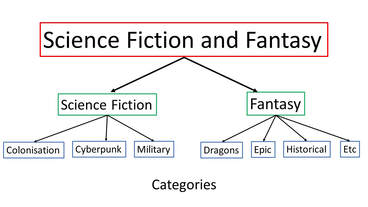 The second type of ad is the “category ad”. This is based on the categories you select when you set up your metadata on KDP. If you have selected “Romance>historical” then anyone who searches for that type of book will see your ad. They will also see that type of ad if they have ever bought that type of book. (We still see ads for Lego on our Amazon homepage because we once bought our grandson some Lego). Now, there are authors who like to call themselves “No 1 bestselling” and the way they do this without lying is to put their book into an obscure category that only requires one or two sales to get to the number 1 position in that category. For example, if an author puts their book in Kindle Store > Books > Home & Garden > Animal Care & Pets > Fish & Aquariums they can reach the number 1 spot with only 1 sale. KDP doesn’t read the book, so it will accept the entry even if the book is an historical romance. The author then gets their Mum to buy a copy and, hey presto, they are a No1 bestselling author. However, their vanity means that is the only book they will ever sell, because people who want to read historical romance will never see their book if they do a search for their favourite genre. The book will only be seen by people who are searching for books about keeping fish - and they are unlikely to buy it. So having your book in the right category is vital for sales and it is something that the challenge spends some time talking about. Vanity will be far better served by selling more books than by calling yourself a No 1 best-selling author. 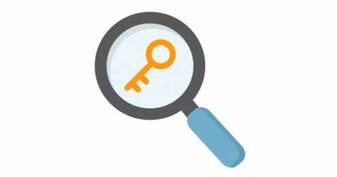 The 3rd type of ad is the manually targeted keyword ad. This requires the author to generate between 100 and 150 keywords which might be used to search Amazon. By including those keywords in your ad your book will be seen by anyone who uses those words to do a search for their next book. A lot of those keywords are either the title of a book, its subtitle, the series title or the author’s name. That’s because if readers have enjoyed a book, they will use one of those things to find their next read. Some even enter the ASIN for the book they read, which is Amazon’s product identification number for it. Generating keywords is time consuming, so the challenge talks about using some public access (ie free) browser plug-ins and websites to help speed up the process. 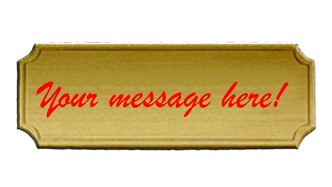 The final type of ad, which is only available for ads on Amazon.com, is the “custom ad”. This uses up to 150 characters of customised text as the “hook” to get people to click on the ad link. Again, the challenge talks about what makes a good hook, so you aren’t working totally blind. That type of ad can be used in conjunction with either categories or keywords to improve results. One of the things that the challenge points out is that if you set a budget, Amazon often doesn’t spend it all. So, if you set a daily budget of £5 ($5) which is the level recommended by the challenge, it doesn’t mean you will spend £5 x 30 = £150 a month. Our experience backs that up, because we only spend a fraction of the budget we set each month. But if your ads are profitable, the actual budget you set doesn’t matter anyway, because you will always come out on top. If you have never done this before, then saving up £150 so you can give it a try is very worthwhile. And you have time to do that before the January challenge. The next challenge is actually October, but you may not have had time to save up before then, but if you are someone who has a bit of spare cash, then we would recommend doing the challenge sooner rather than later. After all, why wait until January to find out how to sell more books?  There is a word of warning we must give, however: patience isn’t just a virtue, it is an essential. Results aren’t instantaneous. It can take 2 or 3 days just to get the first click on an ad, and it may need 10 or 20 clicks to make your first sale. But the system learns from those clicks and gets better at sending ads to the right people, so sales increase and the number of clicks needed to make a sale goes down. By “sale” we include KindleUnlimited downloads. A good result is 6-8 clicks per sale. We are getting a sale for every 4.8 clicks for one of our ads, which is excellent. As you can guess, we are very happy to recommend the challenge to you, our readers. Remember, it is free to undertake, and you don’t actually have to spend money on Amazon Ads if you don’t want to. But we think you will gain far more than you spend if you do. You can find out how to register for the next 5 Day Challenge by going onto the challenge's Facebook Page and following it. It is closed for posts and comments right now, but will re-open nearer the time. I would suggest checking it from about mid-September onwards. For our review of “Self Publishing With Amazon Ads” click here. (you will need to scroll down to find it) For our review of “Fiction Blurbs, The Best Page Forward Way” click here (again, you will need to scroll down). If you have enjoyed this blog, or found it informative, then make sure you don’t miss future editions. Just click on the button below to sign up for our newsletter. We’ll even send you a free ebook for doing so.
0 Comments
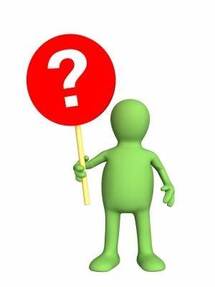 It’s a question a lot of Indie authors ask themselves, but isn’t easy to answer: “Should I do a free book giveaway?” If you only have one book out there, then the answer is “No” (but there are caveats to that – see later in this blog). The purpose of a free book promotion is to stimulate interest in your books, so that you sell more. But if you have given it away for free, who are you going to sell to? The people who have already had it for free aren’t now going to buy a copy, and if someone didn’t download it for free, they are hardly going to pay for it once the offer ends (again, see the caveats later). No, the idea of a free book promotion, or giveaway, is to showcase your writing, so that if readers like the free book, they will then buy your other books. For series writers this is a great incentive for doing a free giveaway. And for non-series writing authors with more than one title available, there is something in this for you as well.  "If it's free, I'll take 10, no 20, no 100 ...." "If it's free, I'll take 10, no 20, no 100 ...." OK, let’s deal with the elephant in the room. Yes, it is true that some people will download the free offer just because it is free and won’t then come back to buy any more of your books. But that is what I call “collateral damage”. It is unavoidable I’m afraid. But mixed in with the freeloaders will be readers who will try your book for free and then go on to buy more of your work if they like what they have read. I know this to be true because I have done it myself. I don’t think I’m unusual in this. At Selfishgenie we have also proved it with previous giveaways, which have resulted in an up-tick in sales of the other titles in the series after the promotion has ended. When we talk numbers later in this blog, they are based on actual results from previous promotions.  So, if you have more than one title available or you are a series writer, doing a free book giveaway can boost the sales of the rest of your books. You may have sensed a “but” at the end of that sentence. If you did, you have excellent intuition. But making a book free is no good unless you tell potential new readers about it, so that they can download it. There are free book listings on most etailing sites; Amazon certainly has one. However, a quick search we did for free books on Amazon returned 9,000 results. The chances of your book being on one of the early pages of the search results are pretty slim and if your book is anywhere more than five pages down the results, there isn’t much chance of it being found because people hardly ever go that far down search results.. 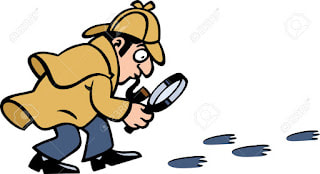 I refined that search to “most downloaded free books” and the list was reduced to just 3 pages, but to get into that list your book must have already been download for free, so it won’t appear there on the day you start your promotion. It won’t appear there until someone, (actually several someones), has downloaded the book. Social media promotion will probably shift a few downloads for you, if you have a lot of followers. However, there is no guarantee that your posts about your free offer will be seen. If you only have a very small following on social media, then your reach is limited unless you get a lot of re-Tweets or shares. It may seem counter-intuitive, but you will probably need to spend some money to give your book away for free. 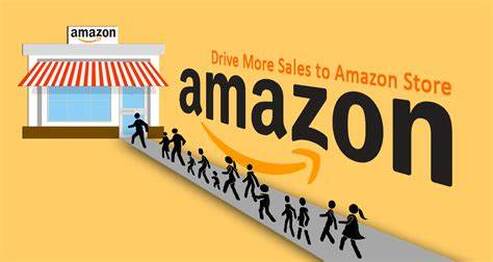 I don’t think Amazon or Google advertising are cost effective ways of doing that. You pay by the click, so it is difficult to control your spend because you probably need a lot of clicks to get enough downloads to start generating paid sales later, which means setting a high daily budget for your campaign. So, you need to look at other, cheaper ways to promote your free book. Ways that will generate lots of downloads. And you really want to know how much those downloads are going to cost you in the first place, so you can work out if you have any chance of getting your money back in paid sales. I’m talking about book promotion sites, which offer a fixed package for a fixed price. 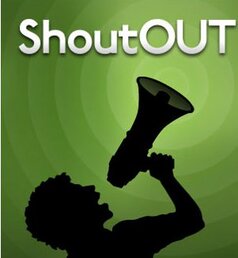 Now, there are two types of book promotion sites. There are those that use social media to promote your book and those that use a wider range of approaches (which may include social media but may not). The most important of these other approaches is email lists, because they are bound to be seen by readers who are on the list. Please, don’t use sites that only offer social media promotion - you can do that for yourself for free. Ignore the fact that your book will be “featured” on the promoter’s website. This isn’t the best way for the promotion to be seen. If that were the case, then it being on Amazon should be enough – and it isn’t. There is usually no guarantee that the readers the sites reach are the right readers for your genre, however. You may be an author of fantasy books and some of the people on the email list may only read romance, or crime drama, or whatever. But at least the readers of fantasy will also see the promotion. Genre preferences are one of the reasons why a 1,000 clicks may only get 100 downloads.  We have recently run a trial using a book promotion website, for our title “The Magi” which produced some promising results. The site we selected boasts an email list of over 300,000 readers. The site promised a guaranteed 1,000 downloads for our free book but we actually only got just over 200 (I’ll return to that later, to explain how the guarantee works). We usually think in terms of 10% of downloads generating new readers for a series or, in this case, approximately 20 new readers. So, here’s the maths (or math if you are American). 1. The promotion cost us £67 ($75) after using a discount code found in this blog 2. The book sells for £4.99 on Amazon. 3. One sale generates about £3.50 in royalties. 3. There are 9 books in the series. 4. If a reader who downloads the first book for free then buys the other 8 books, then it generates 8 x £3.50 = £28. 5. Therefore 3 new readers returns a profit of (3 x £28) – £67 = £14 profit on the promotion. But we reckon 200 downloads should return 20 new readers, so the anticipated profit is about £490. Impressed? Ok, too early to place an order for a Ferrari, but profit is profit. 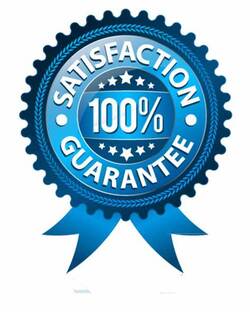 But we were guaranteed 1,000 downloads, so what happens now that we have fallen 80% short? The site owners promise us a pro-rata refund on the cost of the package. It is “site credit”, so we can’t take it in cash, but it does mean we can run another free book promotion in a few months’ time and it won’t cost us so much. It also means that our profit for this campaign will be higher because of the refund. As for why we didn't get the guaranteed 1,000 downloads, we'll return to that later. There is another aspect to the free downloads that we haven’t yet mentioned and that is the reviews that they generate. If you haven’t had many reviews for your book up to now, then this is a good way to get some more. I mentioned caveats earlier and this is one justification for an author with a single published title to run a free book promotion. 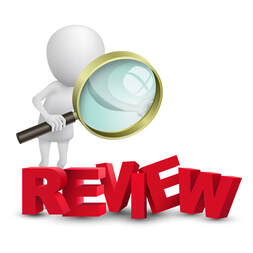 Remember, there were 200 downloads. That may generate a lot of reviews. Even freeloaders write reviews sometimes. And we all know how important reviews are for future sales. There is another time when an author with only one published title may consider doing a free book promotion. That is when they are about to publish a second title. Putting the first book out for free can stimulate demand for the second book. To make sure that this is capitalised upon, the author must put their new title on “pre-order” before running the free promo, and they must include a link to the pre-order at the end of the free book. That means uploading an amended manuscript that includes the link, but that is the work of moments. 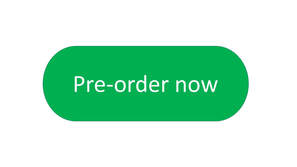 Once the pre-order goes live, whatever sales have been made will catapult the book up the sales rankings, which makes the book look more attractive to other readers who may not have taken advantage of the free download. However, it does require the book launch to be properly planned and timed, so that everything happens at the right time and in the right order. The book promotions site told us that 92% of the promotions they run for free books reach the 1,000 download target, so why didn’t ours do so well? We think we have some answers. We ran our promotion from Thursday to Monday and the number of downloads we got over the weekend was very low compared to the other 3 days. This suggests a lot of the email addresses to which the promotion is sent are work related, so no response at the weekend. But there is another possible reason.  Author Robert Cubitt Author Robert Cubitt The author of the free book, Robert Cubitt, is British but around 80% of the readers on the promotion site’s email list are American. Our actual downloads reflected that proportion, with about 20% coming from outside the USA (UK, Canada, Germany, France Netherlands and Australia to be precise) and 80% from within. Sad to say that many readers will only read books by authors who are the same nationality as them. I don’t know why this should be. I guess people like books that are either written by people like them or are about people like them. But The Magi is a sci-fi series and none of the characters are like the readers (unless there are aliens amongst us) so it shouldn’t matter. It shouldn’t matter for the fantasy genre either. But it does seem to matter, so we Brits will have to suck it up and make do with the scraps from the table. But a potential £490 profit is quite a big scrap and is certainly better than no profit at all. This is NOT a recommendation, but the website we used for the promotion we have discussed here is Book Butterfly. If you missed out on our recent free book giveaway, don’t despair. You can still get a book for free just by signing up for our newsletter. Just click on the button below (excludes “The Magi Box Set). 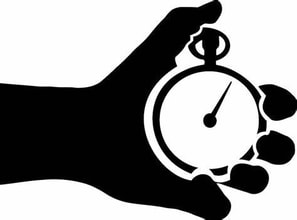 Timing is everything in life, but even more so for Indie authors who are trying to promote their books on a limited (or even zero) budget. Here at Selfishgenie we track our sales on a day by day, week by week, month by month basis so that we can work out when is the best time to advertise our books. Some days we see more people buying books than on other days, so they are the days we want to advertise, so that we can catch the readers' attention on the days when they are buying. That doesn’t mean to say we don’t advertise books on other days. After all, people are all unique and each person has their own shopping habits. But we know that, in broad terms, there are days when more people buy books than other days. Those are the days when we may consider increasing our advertising spend. I’ll go into why those variations exist in a moment. 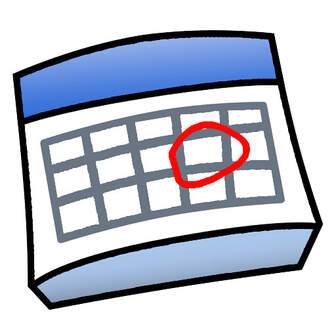 By tracking people’s book purchasing habits over a longer period of time we can also work out when to do promotions. Again, I’ll go into why that may be in a moment. But that same timing issue extends to when we should launch our books. There are some months of the year when it is better to launch a book than others. I’ll be talking about the UK here, but the same rules probably apply wherever you live. All you have to do is adjust to suit your calendar. June and early July are a good time to launch a book in the UK. Why?  Because the majority of people take their vacations in July and August and will be looking for something to read while they hang around in airports, sit in their aircraft seats for several hours and then lounge around the swimming pool at their destinations. For some people this may be the only time of the year when they actually have time to read a book. This is particularly relevant for the ebook market, because no one ever takes enough books with them on holiday, so they’ll be logging their Kindles into the hotel Wi-Fi to buy even more books for the second half of their holiday and for the return journey.  Children's books - yes for July, no for January. Children's books - yes for July, no for January. Children’s books are especially popular at that time of year, because parents are desperate to keep their children occupied while travelling and during the school holidays. The first quarter of the year, on the other hand, is very bad for children’s books because (a) they are back at school, (b) they still haven’t read all the books they received from loving relatives at Christmas and (c) money is tight during the first quarter (see more below). If your books are aimed at the older reader, you will probably want to launch your book in August, because all those grandparents who have been on child minding duty over the long summer holiday period are suddenly free to go on holiday themselves in September, when the kids go back to school. I know, because that’s when I go on holiday and the hotels I go to appear more like old folks’ homes than holiday resorts. There are very few people there who are under fifty and those that are there either have no children or have children who are still too young for school. 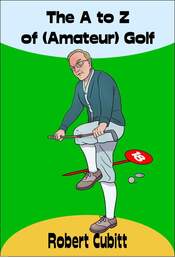 Here’s a tip for you, if you write books in a series. Take a paperback copy of Book 1 with you when you go on holiday and leave it in the hotel (most hotels have a shelf of books for people to borrow). You may snag a new reader for the rest of the series that way. Obviously the seasonal issues mentioned above are applicable to advertising spend as well as book launches. In November and right up to mid-December 2022 we promoted our golf book as a Christmas present for golfers and made quite a few sales that way – more than the whole of the rest of 2022 put together. If you want to know more about the best time to launch your books, broken down into genres, we found this helpful article. But there are others if you do a search. So, what is the best time to advertise?  Books are a popular Christmas present, so giving your advertising a seasonal boost may pay dividends and, of course, we’ve already mentioned the summer season. Think about advertising romance in the run up to Valentine’s Day and promote books as a gift for Mothers’ Day and Fathers’ Day But what about routine, week-in-week-out advertising activity? We found Friday to be the best day of the week to advertise, as that is when people go to look for their weekend reading. Weekdays are generally “early to bed days”, both for children and adults, but at the weekend a lot of people catch up on their reading and to do that they need books. Hence higher sales figures for books on a Friday. 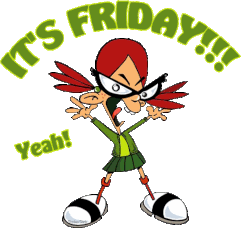 You can even refine that down a little bit if you want. Come lunchtime everyone is thinking about finishing for the week, so they may start browsing the book listings from lunchtime onwards, so you don’t need to spend so much money in the morning. Sunday evening is also a good time, especially for paperbacks. Come Sunday evening a lot of people have either finished their books or are getting close to finishing. The “forward planners” will be thinking ahead and looking towards the following weekend. Paperback readers will be ordering on Sunday evening so that their books are with them by Friday. At the other end of the scale we have noticed we get far fewer sales on a Saturday and a Monday. Saturday is probably slow because people have a lot of family things going on as well as shopping, sport and general leisure activities. Monday probably because people are back at work and won’t have much time to think about reading. 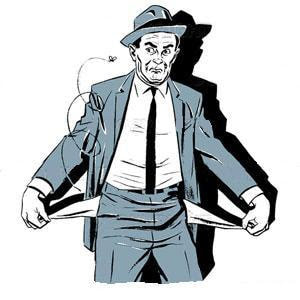 Certain times of the year are better than others for promotions. January and February* are the months when the Christmas chickens come home to roost and those credit card bills for all the holiday spending land on the mat. Energy bills are also at their highest. This means people have less money to spend and one of the places they can cut back is on their book purchases. We have seen consistent reductions in income during the first two months of the year since we started our business. So, this is a great time to do a price reduction or free book promo – especially free! Everyone can afford to buy a book that is free! Again, I’m talking to the series writers mainly. Give the first book in the series away at a reduced price, or for free, and there’s a good chance that if the readers like it, they’ll come back for the rest of the series -at the normal price - when they have a bit of disposable income in their pockets once more.  This is where you have to manage your marketing activity very carefully. No one can download a free book unless they know it is available. So, you have to be prepared to do some marketing. Social media marketing is free of course, but evidence suggests it is becoming less and less effective as a marketing channel.  Conversely, Amazon Ads, Facebook Ads, Google Ads etc are quite expensive, and you don’t want to spend a lot of money to give something away for free, even if you are going to get the money back later in sales for Book 2 onward. There is a happy medium and this is where book promotion sites come in. This year we used Book Reader Magazine and found them to be both cheap and effective. We are NOT recommending them and there are plenty of other, similar, sites who do the same job. You’ll find a list of some of them here. That site also offers some promo codes so you can reduce the cost. Book Reader Magazine cost us $15 (approx (£13) when we used a promo code and we got plenty of downloads as a result. 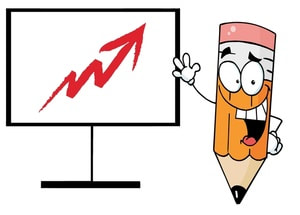 What was the outcome (because that is what is important)? During the first week of March we saw a massive surge in sales of the series we gave away. Some of that increase may have come about because people had a bit more cash available, but the majority of it is likely to be because they had downloaded Book 1 for free and wanted more of the same. It’s an 8 book series (so far) and we make a profit of about £3.50 per book. So, snagging one new reader that way not only repaid our investment, it gave us about an 80% profit. 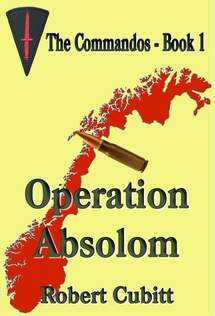 I can assure you we snagged way more than one new reader. Regardless of the season you will need to continue with your advertising at other times if your books are listed on KindleUnlimited (KU). As it’s a subscription service, readers want to get value for money from it and you want the books they download to be your books, so you have to keep pitching to them. You can expect to see KENP page reads going up during January and February as readers opt not to buy books if they are already KU subscribers. Most mainstream publishers don’t use KU, so this is a great opportunity for Indie authors to get their books read instead. However, you may want to reduce your advertising spend a little to reflect the reductions you’re going to get in ebook and paperback sales during the same period.  At this point I have to add a “health warning”. The results I’ve talked about above relate to the books we sell. You may want to analyse the sales data for your books to see if they conform to that pattern – or if they are different. We suspect that there will be similarities, but we can’t guarantee it. * Traditionally January and February were known by London taxi drivers as the “kipper season”. Kippers (a type of smoked herring) used to be a cheap food and taxi drivers ate a lot of them when their income was reduced during the first two months of the year. Presumably they would call it “pot noodle” season now. If you have enjoyed this blog, or found it informative, then make sure you don’t miss future editions. Just click on the button below to sign up for our newsletter. We’ll even send you a free ebook for doing so. 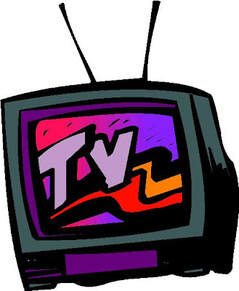 Big businesses spend a lot of money on advertising. I think we all know that. They spend it because it works, otherwise they wouldn’t do it. One of the reasons they spend so much on advertising is because they keep launching new advertising campaigns. They will run a campaign for a few weeks or maybe a few months, then they’ll stop for a while. Then they’ll start a brand new campaign with different ads. The ads may be similar, using the same characters or the same voices, but they will look different. The characters will be in a new setting, or the voices will be fronted by new images. But it’s the same product that is being advertised. So why go to the expense of re-making ads so often? Why not just continue using the same campaign all the time?  It’s because we, the public, get used to seeing an ad, so after a while we don’t pay it any attention. We need something fresh to make us watch the ad and hear the message once more. It’s a bit like teenagers being told to tidy their rooms by their parents. If you thought that your teenager isn’t listening anymore, you are probably right. They’ve heard it so many times, they’ve “tuned out” the message. And we all do it. Which is why advertisers spend so much money trying to attract our attention again by making new adverts. So, what has this got to do with Indie authors? you may ask. I’m so glad you did. "But that will stop working after a few weeks." Indie authors spend a lot of their time using social media to promote their books. It’s free unless you use the paid advertising facilities. The most common way to use it to promote work is to post a bit of blurb and a link to where the reader can find out more. The link then pulls the cover image through from the retail site so it can be seen on the social media site. That’s fine if you don’t want to pay for advertising. But that will stop working after a few weeks. Like adverts for big businesses, people will soon “tune out” your advert because once they’ve seen the cover, it is too familiar to bother with. They either bought the book several weeks ago, in which case they aren’t going to buy it again, or they are going to scroll past it. So, the indie author has to do what the big businesses do. They have to “refresh” the message. How can you, as an indie author, do that? Well, the image is the first thing to look at. Are you relying on the link in the post to reproduce the book’s cover from the sales page on Amazon, or another retailing site? If you are, then you can’t change the image unless you change the actual cover. But, actually, you can. 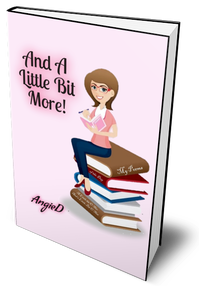 You can upload a new image into your Facebook, Twitter, Insta, etc post. That way it will take priority over the link to the sales page and will be the image that is seen. The link is still there for people to click on, but the image you use can be changed in multiple ways to keep the message fresh. It also has the advantage that you can be more creative with the image and do things that a simple link to Amazon (or whatever) can never do. You can create 3D images of your book’s cover.  You can overlay the 3D image onto an atmospheric background, along with some text. If the book is part of a series, you can show two or three covers side by side in a single image. You can change the orientation of the image to make it more suitable for viewing on a phone or tablet. Ultimately, you can create a “trailer” for your book, using video imagery alongside your book’s cover. That is really eye catching. By now, some of you will be asking “How can I, an impoverished author, create those sorts of images?” Well, if you can use PowerPoint you can do some of that. You can even make videos if you download free apps like “Moviemaker”, which can join together images created in PowerPoint, accompanied by a narration, text or music. If you want to invest in some software to help you, there is Photoshop, Canva and one we reviewed a couple of weeks ago, called Book Brush, which specialises in creating those sorts of images for authors. There are probably other packages available, but we’re not going to list them all. Will it cost much? Well, somewhere between £100 - £200 ($110 - $220) will probably cover it. 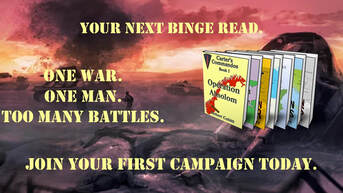 Immediately some of you will be saying “I can’t afford that.” To which I will reply “Can you afford not to sell any books?” If your books aren’t selling, then doing nothing is not an option. Einstein defined insanity as doing the same thing over and over again and expecting different results each time. I’ll put it a slightly different way: If you always do what you always did, you’ll always get what you always got. If you want a different outcome, you have to do something different. That applies to life in general, of course, but this isn’t a philosophical blog. Just be assured that if your books aren’t selling using whatever methods you are using now, they will continue not to sell unless you change your methods. And what you do has to be within both your ability and your control. Unless you want to contract an expensive marketing agency to promote your book, you have to do whatever it is within your power to do. "I know you don’t want to hear this but, by itself, using social media for free is never going to turn anyone into a successful indie author." One of the ways you can do that is to change your post’s images and messages at regular intervals. And to do that you need the right tools. I will admit that there is an element of risk involved here. You may spend money on buying an app to help you create more or better images and you may not increase your book’s sales at the end of it. But, on the upside, if it works and you sell more books, your investment will repay you, because you can use those apps time and again to create more and more new images. But rest assured, if you don’t spend the money, nothing will happen anyway. Success doesn’t come for free, as any indie author who is selling a lot of books will tell you. We are selling quite a lot of books because we are spending money. We aren’t a big business so we can’t afford to spend much. But if we didn’t spend anything, we wouldn’t sell enough books to cover our day-to-day running costs. I know you don’t want to hear this but, by itself, using social media for free is never going to turn anyone into a successful indie author. If you have enjoyed this blog, or found it informative, then make sure you don’t miss future editions. Just click on the button below to sign up for our newsletter. We’ll even send you a free ebook for doing so. Disclaimer: We are not connected with Kindlepreneur in any way and have no financial interest in the product reviewed in this blog. This review has not been paid for by Kindlepreneur, Dave Chesson, or anyone else.  Not the real product's logo! Not the real product's logo! Let me make it clear up front, if you only have one book published and never intend publishing another, you aren’t doing much marketing and you don’t intend paying for marketing, this product may not be of much use to you. But if you intend having a lengthy career as a self-published author, if you are planning to publish a series, or if you are a small, independent publishing house like us, then there is probably something here to interest you. Warning: This is a lengthy blog because for authors and publishers to understand the value of the product we are reviewing, they also have to understand the need for it. What need do you have that this product satisfies? You may not even know you have that need until you read this blog. Publisher Rocket is an aid to marketing and an aid to advertising using Amazon Ads and other advertising platforms. One of the things every publisher (I include self-published authors in that) has to know is which keywords to include in their book’s description in order for it to attract the attention of readers when they are looking for something new to read.  If you have ever uploaded a book onto KDP, you will know that you are allowed to enter 7 “keywords” into your book’s details. Actually, you can use more than 7 words, because you can enter “strings” of words. For example, you don’t have to limit yourself to “romance” as a keyword, you can enter “modern romance” instead and it will still only count as one keyword. When readers are searching for books to read they may use Google, other search engines, or the search bars of retail sites such as Amazon. Very often they don’t know exactly what they are looking for, so they can’t enter a title or an author’s name. Instead, they enter a word or string of words that describes (for them) the type of book they want. For example, as a fan of historical fiction, I may do a search using those two words. Or I might add “military” to the description because I like historical fiction set around military themes. Or I might use “World War II” as my search term. "they are wasting one of the 7 keywords that KDP allows them." If the author knows what search words the readers are using, they can make sure those words are included in their 7 keywords for their book’s description on KDP, so they are guaranteed to be found when a search is done, and the book will appear in the search results - though not necessarily near the top of the list. But authors also need to know which words not to include; the words that readers rarely use for searches. If the author uses them, then they are wasting one of the 7 keywords that KDP allows them. 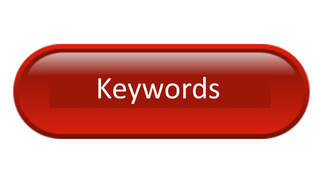 The problem is, identifying which words the readers are using. It may not be the ones we think they are. You may think I’m talking about “Search Engine Optimisation” (SEO) and you are dead right – I am. Only we don’t need to use a fancy term like that, and we certainly don’t need to pay someone to do that for us. Manual targeting on Amazon Ads is the most cost efficient way of using that advertising platform. But it relies heavily on the advertiser (you) knowing how to get the best out it. 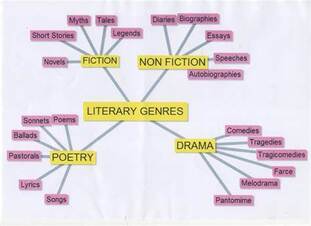 So many genres - but which one is the best fit for your book? So many genres - but which one is the best fit for your book? The first type of manual targeting uses your book’s genre. Anyone who buys books in the same genre will have your book in their “recommendations”. Amazon Ads suggests the genres and you can delete any that you don’t think really apply. For example, Amazon Ads may suggest both modern and historical romance for your book, but your book can’t be both, so you can delete the one that doesn’t apply. But you can also insert your own genres. For example, if yours is a fantasy book with a strong romantic sub-plot, you don’t have to limit your advertising to the fantasy genre. You can add romance genres too. Do you know which genre listing on Amazon is going to be the best for your book? Some are better than others for getting your book seen and, according to Publishing Rocket’s publicity video, there are “hidden” genres too. For some genres you can even get to the number 1 bestseller spot by selling only a handful of copies. That is useful stuff to know – but how do you find out which genre(s) you should be advertising to? Read on to find out. By the way, did you know that you aren’t limited to just 2 genres on KDP? That only applies when you first upload your book. Once it is published, you can select up to 7. You need an account on Author Central and then you need to go to Help>Contact>Amazon Store & Detail Page>Contact us>Amazon Book Page>Update Amazon Categories. 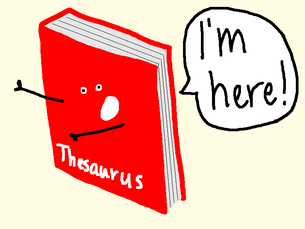 The second type of manual targeting uses keywords. Amazon Ads tutorials suggest using between 100 and 150 keywords (or keywords strings) in an ad such as this. If you struggled to come up with 7 keywords for your book, how are you going to come up with 100-150? Well, using author names and the titles of similar books is one way. But whose books and which titles? Which is where Publisher Rocket comes in. OK, it took a long time to get here, but if you don’t understand the basics of Amazon (or other platform) advertising, you aren’t going to understand the value of this product. What Publisher Rocket does is gather together the search terms that are used on Amazon and presents them to you for your consideration. But it also does much more than that. It also provides data which tells you which of those terms is best at turning advert “clicks” into sales. "Publisher Rocket helps to sort the wheat from the chaff"  Not all search words are equal, you see. Sometimes the reader enters fairly random words into the search bar and therefore the results they get back don’t provide them with what they are looking for, so they have to have another go. But if the reader clicks on a book out of curiosity, those random search words still appear as results, so it is essential to know that they aren’t that useful, so as to exclude them. Publisher Rocket helps to sort the wheat from the chaff by providing the user with a wide range of data that they can download into a spreadsheet to filter and sort to their heart’s content to answer the vital keyword questions they may have. The one thing they don’t want to do is pay for clicks on their ad which won’t be converted into sales. Just because they and Isaac Asimov both write sci-fi, it doesn’t mean that their readers and Isaac Asimov’s readers like the same sort of books. They may want to exclude that name as a keyword for that reason, so that they don’t pay for clicks from curious Isaac Asimov readers who aren’t going to buy their books.  OK, if that sounds complicated, that may be something for just the real data nerds to get into. For the rest of us, Publisher Rocket provides us with some simpler tools to use to find words that are good to use for our books, by genre, and what aren’t so good. Using the app is easy enough, but Publisher Rocket’s owners make it even easier by providing “how to” webinars to guide you through the various functions and offer advice on how to get the best results. The owner of Publisher Rocket is a company called Kindlepreneur, a company created by self-made Kindle millionaire Dave Chesson. This isn’t their only product, but it is the one we have found to be most useful in helping us to increase the efficiency of our advertising campaigns. If you saw our blog last week (see below the end of this blog), you will know that this is something we have been focusing on in recent months and it has paid off for us. Publisher Rocket costs $97 (around £85) for a lifetime subscription, which is why it may not be suitable for people who only ever plan to publish one book and who don’t intend getting into marketing. In other words, it isn’t any use to an author who doesn’t want their book to be read. Those that do want their books to be read may find it more useful. "As a publisher this was a no brainer for us" But even if you only have one book, the purchase price could be paid back quite quickly (it is the equivalent to approximately 50 extra sales) if you use the results to improve your advertising efficiency. As a publisher this was a no brainer for us. We bought Publisher Rocket in November last year and it had paid for itself by Christmas. We don’t use it every day, but when we do use it we know we are going to get the most bangs for our buck out of our advertising. So, if you need some help with your Amazon Ads, this product may be just the thing and we are happy to recommend it. If you want to know more about the product, click here. If you have enjoyed this blog, or found it informative, then make sure you don’t miss future editions. Just click on the button below to sign up for our newsletter. We’ll even send you a free ebook for doing so. Disclaimer: We are not connected with Bryan Cohen in any way and have no financial interest in his book. This review has not been paid for by Bryan Cohen or anyone else. 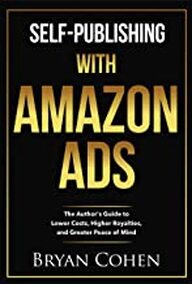 This book probably represents the best £3.99 I have ever spent since I started publishing. That is because it’s a book that actually paid for itself several times over. I would go so far as to say I wish I had read it 5 years ago, as it would have saved me a lot of time and money. That isn’t actually possible, as the book was only published this year, but you know what I mean. This article will be half book review and half blog. The blog part tells you what happened when we tried to apply the ideas and methods that Bryan Cohen recommends in “Self-Publishing With Amazon Ads”. Some of you may just want to know how that worked out, so that bit is at the end of the article. "You’ll have to find out the hard way that there is no such thing as “instant gratification” when it comes to marketing a book." If you are still reading this now, and haven’t scrolled down to find out what happened, you have one of the key qualities that Bryan Cohen talks about in the book: patience. Cohen doesn’t promise instant results. One of the first things you will learn from this book is that generating consistent results from Amazon advertising is a marathon not a sprint, and if you aren’t prepared to be patient then this may not be the book for you. You’ll have to find out the hard way that there is no such thing as “instant gratification” when it comes to marketing a book. If you have never used Amazon Ads, or you have only just dipped your toe in the water, then you will be at a bit of a disadvantage, as Cohen assumes some prior knowledge. But don’t worry. That prior knowledge is available. Amazon Ads provides webinars for its new users here. "helping authors to reduce the amount of money they spend while also getting better results" A word of caution about the webinar. It is aimed at encouraging you to spend money with Amazon Ads. After all, Amazon Ads is a business and it makes its profits from its users, so the more money users spend with them, the more profit Amazon makes. Bryan Cohen’s book, however, is aimed at helping authors to reduce the amount of money they spend while also getting better results. This means that some of Cohen’s advice on bidding strategies contradicts that of the webinar. And if you are wondering what a bidding strategy is, it means that you need to do the webinar before you dive into this book. Just a quick word about the author. He is a self-published author himself and he also provides self-publishing training and other services for authors through his website Best Page Forward. But not all the training he provides has to be paid for. Each quarter he hosts the 5 Day Amazon Ads Profit Challenge, which is free to join and which has provided coaching for over 25,000 authors. "She challenges Cohen at every turn" Each chapter in the book takes the reader through a different phase of a process that starts with poorly performing ads and progresses to turning those ads into high performing ones. Each chapter therefore introduces a new idea or method, so if you try to skip ahead to the “good bit”, where you are making millions, you are likely to miss out on a vital step which means your objective won’t be realised. See, once again you have to be patient. Just something to note. Early in the book Cohen talks about creating 5-10 ads a week. This is for the benefit of American readers, because Amazon.com allows readers to create customised ads and advertisers are encouraged to create several different customised ads a week to appeal to different segments of the market. That facility doesn’t exist for users of other Amazon markets (yet). For us, the Amazon page for our book is our ad. That is actually a timesaver for us, because one ad can run forever. However, the rest of what Bryan talks about is completely valid and if we ever get access to the customisation function, we'll be ready for it because we've read this book. Each chapter is broken down into two parts. One part is a “fly-on-the-wall” view of an on-line coaching session with one of Bryan’s clients, a woman called Erin. The other part is Bryan speaking directly to the reader to explain what he is teaching Erin. I don’t know if Erin is a real person or a composite character created for the reader’s benefit, but she is the person who asks the questions that the reader might want to ask. She comes to the course as a sceptic and has to be shown that the process works by actually implementing the methods herself so that she can see the profits from her ads increasing over time. And Erin isn’t a passive student. She challenges Cohen at every turn, especially on the issue of how long it will take to see returns and how she is going to fit in the time to do what he recommends. Because, as with all things, time is one of the most valuable resources we have and, as writers, we’d rather be spending our time writing than marketing. But Cohen is ahead of Erin here as well and there are specific sections on time management. "only a handful of people will ever achieve 6 digit profits" One of the things I liked about the book is that it is grounded in realism. When Cohen talks about increasing royalties and profits (not the same thing, as you will find out if you buy the book), he doesn’t promise telephone number sized amounts of money. He talks about investing $50 dollar a month to make $100 profit, which gives a feeling of being achievable. He then talks about increasing that profit to $200, $500 and maybe $1,000. He does refer to people who have made considerably more, but he tempers that with the realism that maybe only a handful of people will ever achieve 6 digit profits – but you get a warm feeling from knowing that, by doing a bit of work, you could be in that handful. Cohen is just as realistic about how much time we have available to do the work. He knows we have day jobs, families to look after and writing careers to pursue, so he tries to optimise the amount of work we may have to do in order to make best use of the time we have available. Time management is a key message. Readers of this blog will notice that I have only given the book 4 stars and therefore I had some reservations about it. That is true, but the reservations aren’t about the lessons that Cohen teaches, they are more about the way they are presented. For a start, Cohen refers to some calculations you may want to do in order to produce some performance data. Some worked examples would be very helpful to understand what he is talking about, but they are lacking. "bombarded with a whole lot of data" There are no handy graphics, such as screen shots of Amazon Ads pages, where things can be pointed out. While I am quite good with the internet, there are features I miss on web pages and some key features aren’t always the most prominently displayed. A graphic pointing out “This is the button you need to click” and “This is where you have to alter x” would be really helpful. The other thing I had a problem with is the additional applications that you might want to use, especially those relating to generating lists of keywords (If you don’t know what a keyword is, then see above regarding the Amazon Ads webinar). One of the applications has to be purchased (about £100) and comes with its own training videos, so that’s OK (it isn’t essential and you don’t have to buy it, but it is a useful tool and we will review it next week). But the other two are plug ins for Google Chrome, which are free and come with neither a user guide nor helpful training videos. I tried using them and was bombarded with a whole lot of data which I struggled to interpret. Some guidance on how to interpret the data produced by those plug-ins (with accompanying graphics), so that I could use it in ads, would have been really useful. But don’t let those three things put you off buying this book. Firstly, with a bit of patience (again) I found the buttons I needed to click and the things I needed to adjust. And, with some trial and error, I did work out how to interpret the data produced by the plug-ins. But it took time that I hadn’t factored in and which I had to divert from other activities. "while we were doing a lot of things right, we were also doing quite a few things wrong" So, how did we get on? The first thing you need to know is that here at Selfishgenie we aren’t complete novices. We have been running Amazon Ads for many years, with mixed results. From articles I had read on various websites I found out that advertising with Amazon wasn’t a quick fix. We would need to spend more money than we had in the past and let our ads run for longer if we wanted them to be successful. So, around April 2022 (before we bought this book) we decided to commit some of our sales revenue to improving our advertising, as an investment to make more revenue in the future. And it worked. We launched an ad campaign for our Carter’s Commandos series and saw our monthly royalties increase from the low three digit level per month to a four digit level by October, which we were able to maintain. But the amount of money we were spending to get that revenue seemed to be higher than it needed to be. In terms of profit on the campaign (the net amount we made from each sale compared to the gross amount we spent), we felt sure we should be doing better. That was when I stumbled across Bryan Cohen’s book. Actually, I did a search looking for blogs about using Amazon Ads and it appeared in the search results. It didn’t take long to discover that while we were doing a lot of things right, we were also doing quite a few things wrong. In particular, our bidding strategy was wrong. We thought we could buy sales by spending more money. In fact, all we were doing was giving Amazon more money than we needed to, which was reducing the profit from the sales we did make. "give away Bryan’s secrets for free" The way Amazon’s advertising algorithms work mean that bid price is only one factor in getting our ads seen. I won’t steal Bryan Cohen’s thunder (or reduce his books sales) by telling you what the other variables in the algorithms are. (I know, but it wouldn’t be fair to give away Bryan’s secrets for free). I won’t bore you with all the details of what we did. Suffice to say that we learnt the lessons that Bryan Cohen was trying to teach us.  But what we did do was to run a trial to see how his methods compared to our own. We continued to advertise our Carter’s Commandos series the way we always had. But our Magi sci-fi series had been bumping along the bottom, making very few sales per month. So, we started a brand new ad campaign for the first book in that series and applied the newly learnt lessons to that series to see what happened. NB. When I refer to "sales" below I also mean KindleUnlimited (KENP) pages read. 1st 30 Days The good news is that we got clicks on our ads from Day 1 and we made more sales than in the previous 3 months, but they weren’t Earth shatteringly good. The campaign wasn’t profitable, meaning we spent more than we received in Royalties. We tweaked the book’s blurb (see last week’s review of “Fiction Blurbs: The Best Page Forward Way”), but there wasn’t much else we could do to stimulate more sales during that period. 2nd 30 Days Here we started to reap the benefit of “delayed results”. It is said that buyers have to see an ad an average of 7 times before they respond. This seemed to be the case as the number of clicks on our ads increased the longer the ad ran and we started to see more sales. But we also started to see sales for books we hadn’t advertised. The Magi is a 9 book series, and we were only advertising Book 1. But we started to get sales for books 2 – 9, which we hadn’t advertised. Our original ad was instrumental in developing a “fan base” for the series. These additional sales meant we were now in profit. Final 30 days I’d be lying if I told you that sales really started to take off. But they did continue even if they were unspectacular. There seems to be some sales resistance to The Magi series which we aren’t getting for other series, and we need to dig into that to see if we can work out what is causing it. The final 30 days of the trial was also during January, when money is traditionally tight for people - even avid readers of sci-fi. However, we have sold more copies of titles in The Magi series in the last 90 days than we did in the previous 9 months and the campaign is showing a profit, so overall we count it as a success. "highly recommended" So, what are the main take-aways we have from the book? 1. This isn’t a quick fix. We required patience and strong nerves to spend money without seeing a profit for several weeks. 2. If we are doing a “category ad” (advertising by genre), we needed to keep the band narrow so as not to waste money on genres that aren’t relevant and where our ad may generate a click (which we pay for) but won’t get converted into a sale. 3. We needed to use more keywords in our ads and we had to make them relevant to the genre of books we were selling. The Magi series is “space opera”, so there is no point in using keywords that relate to dystopian sci-fi. Again, they may generate clicks, but they won’t get converted into sales. 4. We needed to use the data from the ad campaigns to help reduce our costs. For example, we were getting hundreds of clicks for one keyword, generating cost, but the clicks didn’t convert to sales. Conclusion: readers who use that keyword aren’t interested in our book. So, we deleted the keyword from the list. 5. It works!  Having learnt from this experience, we have now tweaked our ad for Carter's Commandos, to take into account what we now know we can do better, which hasn't increased our sales but has reduced our costs, so we are actually keeping more of our money, which is a win, which makes us happy. If you are an Indie author or a small publisher (like us) then “Self-Publishing With Amazon Ads” by Bryan Cohen is highly recommended. To find out more about the book, just click or tap on the cover image at the top of the blog. If you have enjoyed this blog, or found it informative, then make sure you don’t miss future editions. Just click on the button below to sign up for our newsletter. We’ll even send you a free ebook for doing so. Disclaimer: This blog talks a lot about Amazon, but we are not connected to them in any way other than that we use their platform sell our books. We are definitely not being paid to mention their name and nor are we recommending their services. We are just recounting our experiences in the hope of passing on some of the knowledge we have gained. Here at Selfishgenie Publishing we know that it pays for small publishers and Indie authors to advertise. Not only do we know this, but we have the data to support our arguments. What we have also found, however, is that we can’t rely on some of the data that is provided to tell us if our advertisements are paying for themselves. Over the past 6 months we have been experimenting with our advertising tactics to see which give us the best results. Recently we have been focused on Amazon as the advertising platform of choice. But the first thing we noticed was that the metrics (measurements) provided by Amazon on their platform weren’t matching up with our actual sales.  According to the report for one campaign, we sold x number of books, but according to our actual sales data we had sold yx copies, which was a considerably larger number (sorry to be so vague with the numbers, but that data is privileged information). This is an important difference, because had we believed Amazon’s numbers, we would have concluded that our advertising budget had been wasted. That is because of the ACOS. For those of you unfamiliar with ACOS, it is a calculation that Amazon does to compare the cost of the advert with the income Amazon believes the advert generated It means “advertising cost of sales”. Based on their figures, our ACOS was 198% of what we would get back in royalties as a result of placing the advert. In other words, if we had spent £2 on advertising we would only be getting back about £1 in royalties. 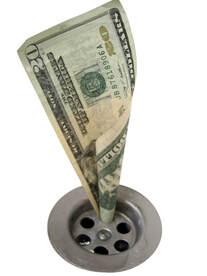 .And that does make it look like we had wasted our money. However, a quick click over to the various websites where we sell our books revealed that we had sold far more books than Amazon knew about – and that included sales through Amazon itself (BTW, when we say “sales” we also include Kindle Unlimited pages read. They account for about two thirds of our total revenue). When we divided the ACOS by the revenue that was actually generated, we got a far lower number, which demonstrated that our advertising campaign was justified in terms of its cost. In fact, for every £1 we spent we got over £5 back. Even after splitting that 50:50 with the author, everyone was making money. OK, Amazon doesn’t know how many books we have sold through other websites and we don’t know how many people have seen our books promoted on Amazon and then gone elsewhere to actually buy them. “Ah,” you might say, “so how do you know those sales were the result of your advertisement?” A fair question. So, why the discrepancy in data? The answer is that we know because the sales were for the same books as we had advertised, or they are part of the same series and there had been a sharp “up tick” in sales coincidental to the dates when the advertising campaign had been run. So, why the discrepancy in data? The first reason is that Amazon does its calculations based on “impressions” and “clicks”. First of all, Amazon Ads measures how many customers had the advertisement placed in front of them (the basis of their charging), either as a result of a search or as a “recommendation”. Then they measure how many of those customers clicked on the link in the advert to take a closer look at the book, and then they count the number of clicks that were made to actually buy (or download) the book. The first number was very high, the second number was lower and the final number was, unsurprisingly, lower still. But what Amazon doesn’t take into account is the psychological effect of the advertising process.  Oh, here we go, he’s wandering off into some metaphysical introspection now. No – I’m not. Please bear with me. Firstly, there is an old adage in advertising that says people have to see an advertisement 7 times before they respond to it. As with all such rules, it is a generalisation. Some people will respond the first time they see an advert, because they have a need for the product and now they now know how they can satisfy that need. Some people, on the other hand, may never respond because they have no need for that product, or because they are very happy with a similar product supplied by a competitor. 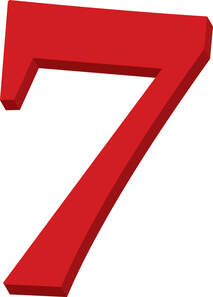 But this generalisation around ad campaigns is important, because the author has to to allow time for those 7 exposures to the ad to take place. In all our ads we have noticed that response was lowest at the beginning of the campaign and then increased as time went on, usually from around day 4, until it reached a plateau. We also noticed that sales were highest at the weekend (including Friday evenings), which suggests people buy more books then. So, it seems to be a good idea to time the ad so some of the exposures occur towards the end of the week, for maximum impact. A second reason is that the advert is for a product the reader may have already purchased, but the target is reminded that the same supplier has other products and they go and look at those instead. Eg they see an advert for Heinz tomato ketchup, they already have enough ketchup, but it reminds them they need Heinz baked beans and they go and buy those instead. We know absolutely this was what was happening with our books. We were making sales of titles other than those we were advertising. People had already bought Book 1 in our Carter’s Commando series, the book we were advertising, but they were reminded of the author’s name and went looking for other work by him and bought those books instead. The final part of the conundrum is that sales continued after the advertising campaign had ended. Why was that?  Partly the same as the reason above, the readers went and looked for other titles by the same author after having bought the one we advertised. But part of it was that either the author’s name or the book’s title had been subconsciously planted in the reader’s memory, so that when they saw it pop up in search results later in the month (which we hadn’t paid for) they responded and bought the book. So, what did we learn by running these recent advertising campaigns:
Here endeth the lesson, Go in peace to enjoy the rest of your day. But if you are struggling to make sales, you may need to think about paying for some advertising. We know it costs money, but if your book sells, it will be a worthwhile investment. And if your book still doesn’t sell, you have to ask yourself why readers aren’t responding to it. But that is a whole different blog. If you have enjoyed this blog or found it informative (Hopefully both), be sure not to miss future editions by signing up for our newsletter. We'll even send you a FREE ebook for doing so. Just click the button below.  All Indie authors need an advertising budget. There, I’ve said it. You may not want to read that and you may now be sticking your fingers in your ears and going “la la la”, but I’m afraid it’s true. Let’s start from basics. Nobody is going to stumble on your book by accident. It may be the best book ever written, but if nobody knows it exists then they can’t read it. 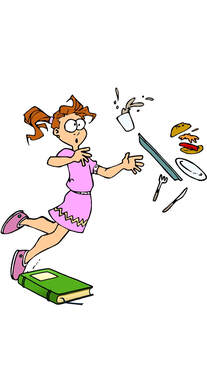 Nobody is going to stumble on your book by accident! Nobody is going to stumble on your book by accident! You will be aware that social media can be used to bring your book to the attention of a wider audience for free, but it has a limited utility. Once your post or Tweet about your book has been read by your “friends” or “followers” they will do one of two things. They will either buy the book (hooray) or they will ignore it (boo). After that, no matter how often you post or Tweet about your book, nothing will happen. The people who bought your book when they first saw the post aren’t going to buy it again and the people who ignored it first time around are going to continue to ignore it. This means you have to keep finding new “friends” and/or “followers” who haven’t previously seen your message and who will either buy your book or ignore it. And finding those people is a relentless slog which takes up more and more of your time. And your time is valuable. You should be spending your time writing new books, not trawling through social media trying to attract new people.  Which is where advertising comes in. There is a thing in commerce called “spend to save”. The basic principle is that if you spend money now on certain things, you will save money in the longer term. For example, if you spend £1,000 on replacing your existing light bulbs with more energy efficient light bulbs, you will save more than £1,000 over the next five years, thus repaying the initial outlay and making a profit. This is also known as “return on investment” (ROI). The same principle applies in advertising, though here you might call it “spend to earn”. If you spend £x on advertising now, you will earn £y back in sales, so the advertising cost is paid back and you get your ROI. This is something that is well understood across business. If advertising didn’t pay for itself, then all those adverts that we see on-line, on TV, in the cinema and that we hear on the radio, just wouldn’t be there. Advertising has to pay for itself or or nobody would do it.  But you are an Indie author. You don’t have much money. How can you possibly afford to advertise? Fortunately, the same social media we used to promote our book for free, also offers the facility to advertise that isn’t expensive. You may have 5,000 followers on Twitter, but a paid advertisement has the potential to reach millions of people. The same applies to Facebook and to all the other forms of social media. It even works by paying for advertising on Amazon. There are some good practices that should be born in mind if you are going to advertise and I’ll touch on these now. We have covered most of them in previous blogs, so we won’t go into detail here. 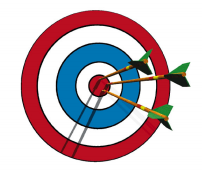 Target your audience. Make sure the advert is aimed at the right people. There’s no point in paying for your book to be promoted to people who don’t read books or who don’t read books in your genre. Time your advertising. Not everyone is on social media 24/7, so find out when your audience is likely to be on-line and time your advertising accordingly. Change your message. People get annoyed by repetition, so each advert should be different from the one before. This will require you to be creative – but you’re an author, you are already creative. Make your adverts eye-catching. People are more attracted to pictures than to words and they are more attracted to moving pictures than to still ones. 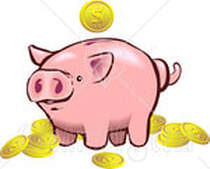 Think long-term. Every new reader that you attract with an advert is likely to stay loyal if they enjoy your book. So that’s a sale in the bag for your next book and all the others you are going to write – and you won’t have to pay for those sales. Save to spend. Set aside money from each sale to help pay for your next advert. I would recommend 10% minimum from the income from each sale.  You shouldn’t waste money on those businesses (mainly on Twitter) who offer to promote your book to their gazillion followers. Their output isn’t targeted and there is very little evidence that it produces results. You might as well stand in the street with a megaphone shouting “buy my book”. In fact, you’d probably get more sales that way (along with a restraining order). How much should you spend? Well, a Facebook advert running for 4 days will cost about £25 ($30) and that should return you enough sales to justify the cost. Other social media channels and Amazon offer similar levels of pricing. How often should you advertise? As often as you can afford it. I would suggest at least one advert per month and if you can’t afford that, try for one very two months. Have I convinced you? If not, then there is only one thing that will. Give it a try, just once, and see what happens. Experience costs money, but for some people it is the only way they will be convinced. But, let’s face it, if your book isn’t selling, then doing nothing isn’t really an option if you want that to change. If you have enjoyed this blog or found it interesting, make sure you don't miss the next edition by signing up for our newsletter. If you do, you can get a full length novel for FREE. Just hit the button.  We started a free book giveaway yesterday, which prompted one of our team on the Zoom call (we don’t have an office – it helps keep costs down) to ask if free giveaways actually work. Which is a very good question. By the way, if you didn’t know about the free book, it just shows the value of signing up for our newsletter – but that’s another issue. We know that people like to get something for nothing, but that isn’t why we give away free books. No, we give books away in the hope that the enjoyment the readers get from it will encourage them to buy more books by the same author. But you knew that already. What you really want to know is if it works or not. Which is a very … sorry, we’ve said that once.  One of our authors One of our authors The answer is that there is no short answer. We can’t point our finger at the work of one of our authors and say “Because we gave away one of his books for free, we then sold more by him” (or her as the case may be). There are some people who do free book giveaways in order to generate lists of email addresses they can use for marketing - you have to email a certain address to get your free copy. We don't do that. We think it's a little bit underhand. When we do a free book giveaway it is always done through one of the etailing sites so that we don't know the email address of the beneficiary. Or we allow a direct download from this website, for which you don't have to provide an email address. (see our "Freestuff" tab to find out what's on offer) But to get back to the point, let’s take this from first principles. If you are trying to get people to buy more books by the same author, then it follows that they must have more than one book available. So, for first time authors, this isn’t going to do them much good. You may think that is stating the obvious, but it is amazing how many first-time authors do free giveaways in the hope of stimulating sales. Just goes to show how hope can delude people sometimes. 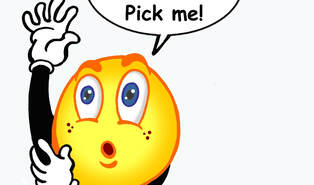 “But it will get my name noticed.” Some authors will reply. No, it won’t. Your name will only be noticed by people who take a free copy of your book. OK, they may come back for your next book, but you haven’t even published that yet, so by the time you do, your name will probably have been forgotten again. For authors who have multiple, but disparate, titles it is hard to see a connection between the sales of titles that have no connection to the one given away for free, ie books that are about different groups of characters, even if they are in the same genre. If you track your sales and there is a sudden surge of interest in some titles, then it does suggest that the free giveaway had some influence. But if the change in sales is less dramatic it could just mean that some new readers have discovered your books and it has nothing to do with the free giveaway. Indeed, the new readers may not even have read the free book and might buy it later if they like the ones they have bought.  It is in sales of books that are written as a series that we see the greatest effect of free giveaways. If it is Book 1 of the series that is given away (which is the sensible way of doing things) then we know that Books 2, 3 etc are probably going to increase their sales if the readers of Book 1 enjoyed it. So, if you are an author that writes a series, then this is something worthy of your consideration. What about books written as ‘tasters’ – stories that are less than full length books which are given away as an introduction to the series. These are usually a prequel, but they don’t have to be. 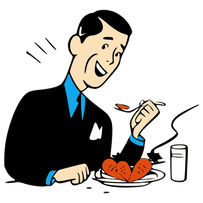 I have to say we have seen very little evidence that those justify the amount of work that is invested in them. If you know differently, then do get in touch and tell us. There are a couple of issues with tasters. The first is the amount of time they take to write. Every author has some idea of how long it takes them to write a full-length novel, but does writing a half-length ‘taster’ story take half the time? Does it take less, or does it take more? And we all know that Benjamin Franklyn said that “Time is money.” Are you going to generate enough sales of your taster to make it worth the investment of time that you have made in the writing of it? You hope you will, of course, but I’ve already mentioned how hope can delude us. 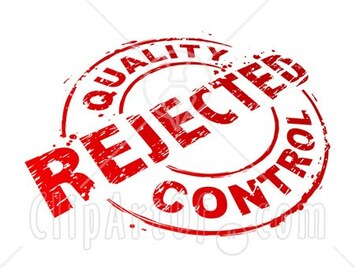 The other issue is quality. I have read some taster novels which are nowhere near as good as the books they seek to promote. Perhaps it’s a psychological thing and the author subconsciously doesn’t try so hard to write a good story for a work they know is going to be given away for free. And if the taster isn’t good enough, it isn’t going to encourage sales of the full price book. That doesn’t apply to all tasters, of course. I have also read some that are brilliant and a good advertisement for their product. It just isn’t a universal truth. But is it enough just to give the book away for free? Should you do more? Yes, you should. 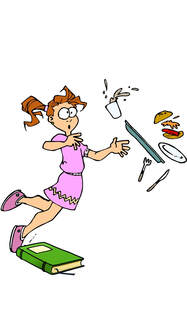 As with all books, readers aren’t going to stumble across your free book by accident. OK, most book etailing sites maintain lists of their free books, so your offering will appear there. But it isn’t the marketing channel you need to appear in. The sorts of readers who haunt the listings of free books are the sort who want to read, but don’t want to buy books. Yes, they’ll download your book because it is free, but there is a good chance they won’t come back and buy the ones they would have to pay for. They’ll be back browsing the lists of free books, looking for their next read No, you need to entice the book buying public, not the freebie lovers. And that means promoting the fact that you have a freebie on offer which they might consider looking at. Those are the readers who will buy Book2, 3 etc of the series. You may also get some reviews, which always help sales. So wherever and however you promote your books, that is where you also have to promote your free offer. You may even have to invest in advertising. 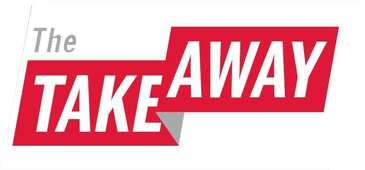 I know it sounds insane to spend money in order to give something away for free, but it does work. Thousands of businesses pay to advertise free and ‘buy-one-get-one-free’ offers and they wouldn’t spend the money if it didn’t work. You need to think of this as a long-term strategy. Yes, it may cost you £50 to run a Facebook advert for your free book, but if you get enough sales of the rest of the books in the series, the cost of that advert could be repaid many times over. So, for those of you who are considering doing a free giveaway, the key points to take away from this blog:
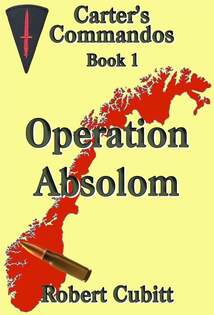 And if you are reading this before midnight on 31st October, you can still get “Operation Absolom” by Robert Cubitt for free. Just click the cover image to find out more. If you have enjoyed this blog or found it informative, why not sign up for our newsletter. At least, that way, you won't miss out on our next free offer. Just click on the button below. 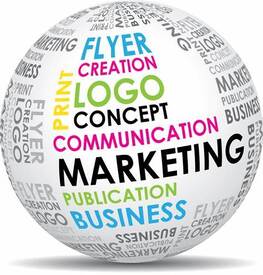 Many an “Indie” author will tell you that the hard part of being an author isn’t the writing of the book, no matter how hard that seemed at the time. No, the hard part is actually selling the book to readers. Let’s face it, it doesn’t matter how good the book is, if no one knows it exists then they can’t buy it. Readers rarely, if ever, just stumble across a new author’s work. It may occasionally appear on Amazon under the heading of ‘People who bought …. Also bought …..” but that is the equivalent of hoping to hit a fish by throwing a stone into the sea. OK, theoretically you could, but it’s unlikely you will. 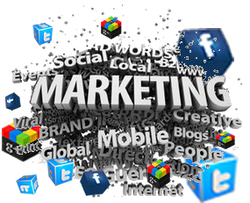 Do not confuse marketing with advertising, because advertising is just a small part of the marketing mix which we will discuss later in this blog. It is covered under the P for promotion part of the mix, but even then it is quite a minor part. Back at the beginning of this year we published a series of blogs that discussed marketing in depth. If you want to read the whole series then look under February in the archive and scroll down to the bottom of the page to start at the beginning. Don’t be confused by the fact that the first blog is Week 5 – the first 4 weeks were looking at the dark arts of publishing. The series continues into March and April But before you go and look at the archive, we’re going to reprise some of the highlights of those blogs to give you a few things to think about. Call them the ‘key messages’. 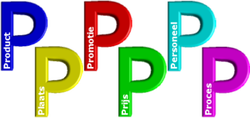 We’ll start with the marketing mix – the 6 Ps. Some marketing blogs talk about the 4Ps, but we’re a bit like Spinal Tap, our Ps go all the way up to 6 (Younger readers may not get that reference). These are:
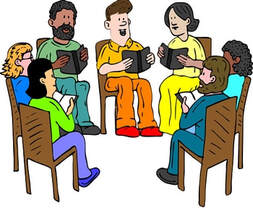 The most important P is people The most important P is people You might think that ’promotion’ is the most important part of the marketing mix, but it isn’t. It’s people. You can 'promote' your ‘product’ as much as you like, but if you aren’t reaching the right people, then you are wasting your time and, probably, your money. Your ‘people’ are the people who read books similar to the ones you write. They are the ones you need to identify and engage with on social media. I say ‘engage’, because if you just ‘promote’ you will lose their interest very quickly. Yes, you can promote, but only as a small part of engagement. You need people to want to follow you, which means having something interesting to say. And if you doubt that, consider this – you’re reading this blog, aren’t you? That is part of our ‘engagement’ with you. Maybe, as a consequence of our engagement, you might take a look at the ‘Books’ page of our website to see what we have to offer – or maybe you won’t. The choice is yours, but the important thing is that you are here, which makes the choice easier.  Paying companies to blast out Tweets about your book won’t get you sales -despite their promises of having a gazillion followers. Because only the Tweets (or other social media posts) that reach the sort of people that read your sort of books are of any use and only you can identify and engage with those people. Just as an aside – doing a #writerslift on Twitter isn’t engagement, it is just becoming increasingly annoying because so many people are doing those. And everyone in the list replying to it and filling up notification boxes is even more annoying. We’ve started blocking all the people who do it. We’ll assume from the start that your book is well written, has a good plot, interesting characters, has been properly edited, proofread and corrected. It is therefore fit for purpose. Only you and your Beta Readers can judge that. So that part of the next P, ‘product’, is OK.  After that the most important part of the product is the cover. Despite the warning in the old proverb, people do judge books by their covers. So, yours must be right for your genre. The cover image is what is going to attract people’s attention, so it has to be eye catching and genre appropriate. A picture of a woman in a big bonnet walking through a field of daisies isn’t going to sell many sci-fi books. The second thing about the cover is that it should tell the reader a little bit about what is happening in between the covers. Call it a visual representation of the plot. A picture is worth a thousand words, or so they say, so make sure that the picture on your cover is using those thousand words to best effect. Here’s one of ours which, we think, tells you a lot about the plot. 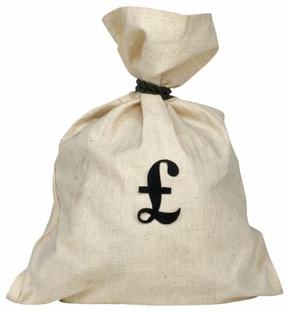 What about price? How much should you charge for your book? If you are a big-name author, you (or, more likely, your publisher) can get away with charging £12.99 ($14.99) for your book. If you are an unknown or Indie author, don’t even think about it. There is some interesting psychology related to pricing. On the one hand, people expect to pay more for a quality product. On the other hand, everyone loves a bargain, even readers. Where you pitch the price of your book is therefore important. Price it an 99p (99c) and readers may think ‘It can’t be very good if they’re practically giving it away’. On the other hand, price it at £12.99 and readers may say ‘I’m not going to pay that much to read a book by an author I’ve never heard of’. We price our ebooks at £4.99 ($5.99) and that seems to be about right for us. But the key messages are (a) don’t undersell yourself and (b) don’t price yourself out of the market. 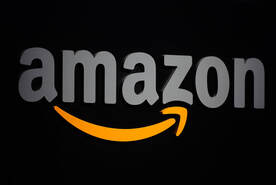 When we talk about ‘place’ we mean the places where you promote your books rather than the places you sell them. We’re going to assume that your book is listed on all the relevant ebook etailing sites and, for those of you that don’t want to give money to Geoff Bezos, all we can say is that if you aren’t on Amazon, you aren’t anywhere. Internet searches always place Amazon at the top of the results, so if someone is actually trying to find your book, that is where it will appear first – and perhaps the only place on the first page of results. Amazon's Kindle Direct Publishing offshoot also allows you to publish in paperback without paying expensive set-up charges or buying a minimum number of copies. But in our terms, place means your choice of social media site(s) on which to engage with readers and promote your work and your choice is important.  If you want to reach young people, then Facebook isn’t the place and Twitter is iffy at best, because young people are always on the newest, trendiest platforms. Only 51% of social media users between ages 12 and 18 use Facebook – the second smallest group. So you need to do some basic research to make sure the platform(s) you are using are the right ones to reach your target audience. But don’t rely on social media alone. Local newspapers and radio stations are always looking for content, so a short item (written by you) will fill some column inches for them or an interview will fill five minutes of radio time. But, again, don’t expect them to find you. You have to reach out to them. Also, check your local community resources (libraries, schools, colleges churches, clubs, societies, etc) for events where you can go along and talk about your work (and maybe sell a few copies). 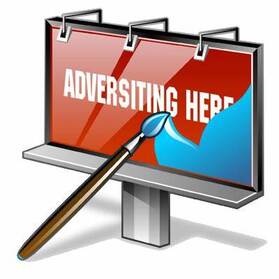 Promotion can be anything from a Tweet or Facebook post to a video, podcast, a free extract or paid for advertising. I don’t aim to cover all of those. Instead I’ll focus on the one that you have to pay for – advertising. Social media has given us all the ability to run relatively cheap advertising campaigns – but which ones work and which don’t? Ask us a question that we can answer. Because, again, it depends on the advertising channel you use. There is no point in paying for and advert on Facebook if hardly any of your target audience ever uses Facebook. We can tell you where we get the best return on our advertising budget – but that would be more confusing because we use different platforms for different books, because different audiences use different social media platforms. What we can tell you is that spending money on Amazon doesn’t seem to work for us. We don’t know why that is, but we have had very little success there. Other publishers and authors tell us that they have had significant success using Amazon, so we can’t explain it. But one important detail about advertising. Makes sure your advert includes the following:
 You’re now wondering what I’m going to say about ‘process’. Actually, not a lot. I’ve tried to get the messages in this blog in the order you need to address them. That’s about all the ‘process’ you need to worry about. But if you want to be successful your ‘process’ must also include research:
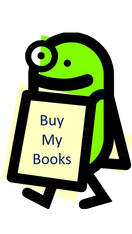 Without that research, you may as well be standing on a street corner shouting ‘buy my book’. And you will be no more successful. And, if doing research sounds like too much hassle, then good luck getting people to stumble across your book by chance. If you have found this blog informative or entertaining (or both) then make sure not to miss future editions by signing up for our newsletter. Just click on the button below. |
AuthorThis blog is compiled and curated by the Selfishgenie publishing team. Archives
June 2025
|

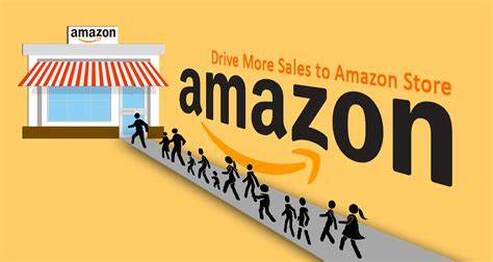
 RSS Feed
RSS Feed